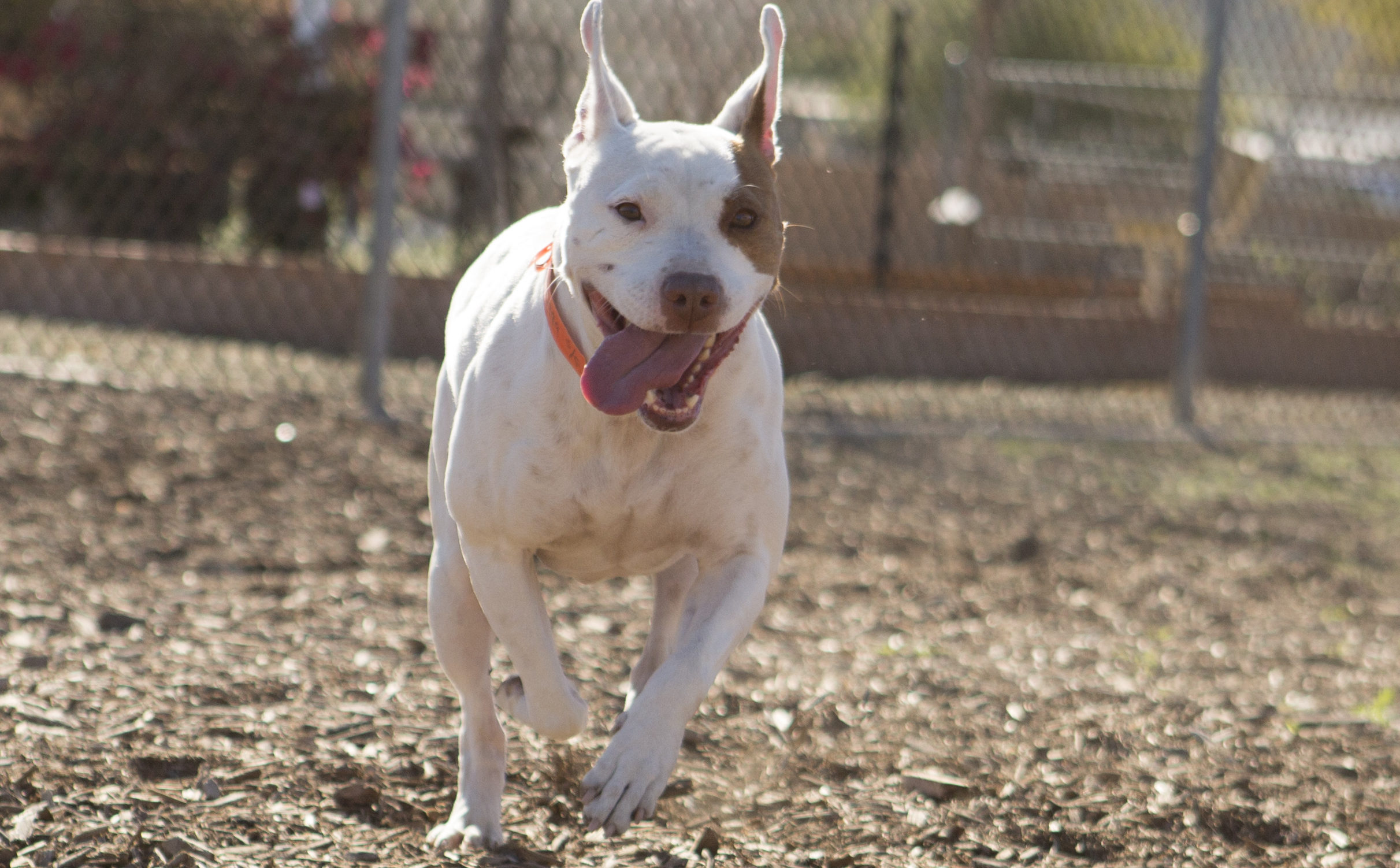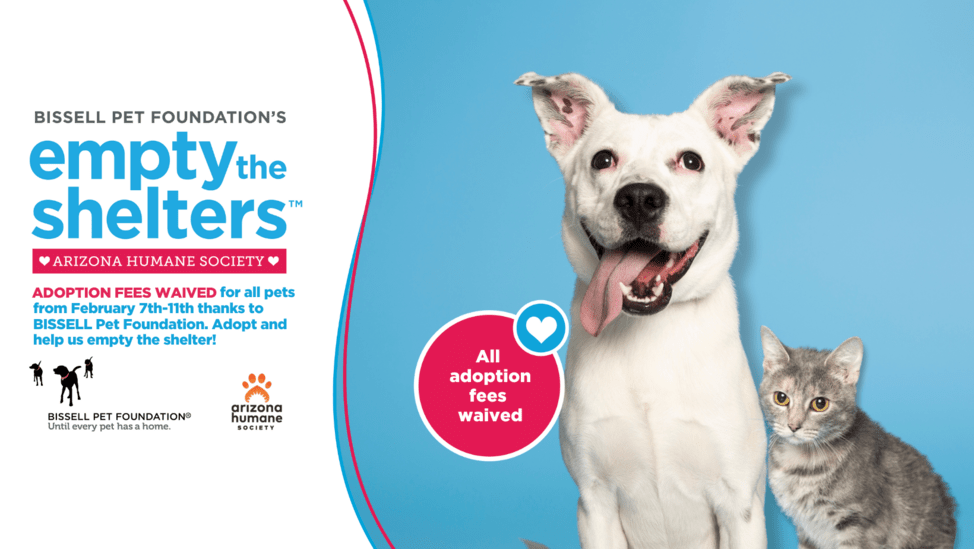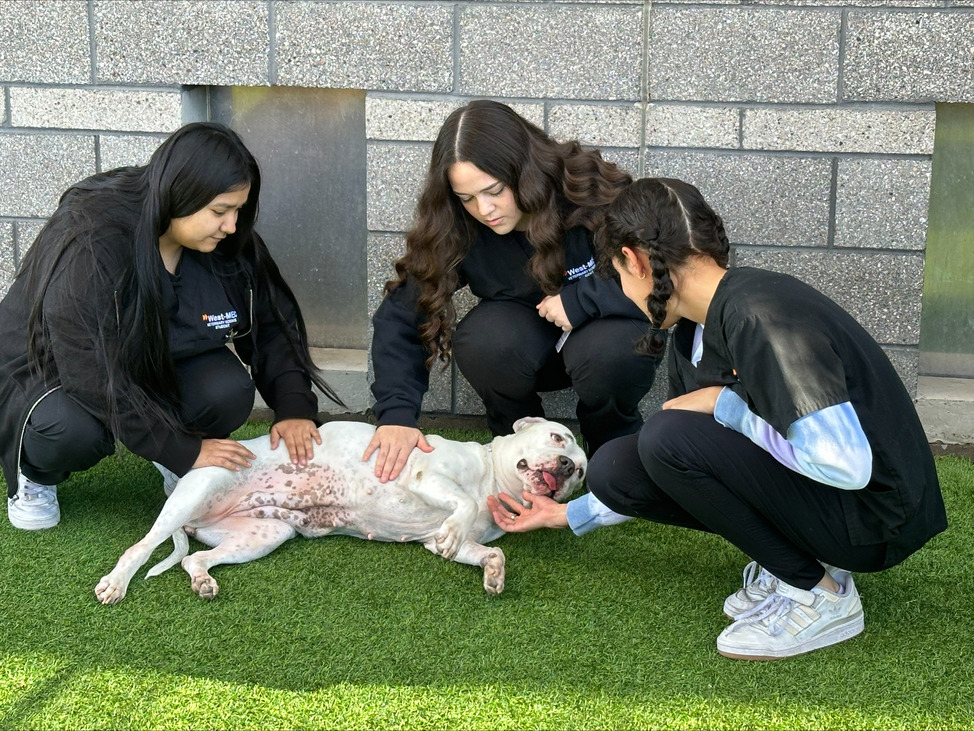 Back to News
Back to News
AHS Vets on Pets: Dr. Julia Schuab on Pet Heat-Related Ailments
Each Summer, Hundreds of Pets are Treated in AHS’ Second Chance Animal Trauma™ Hospital For Heat-Related Ailments.
Dr. Julia Schuab, a veterinarian at AHS’ Second Chance Animal Trauma Hospital™, discusses heat stress, heat exhaustion and heat stroke and the signs to look for. It could end up saving your pet’s life.
 Dr. Julia Schuab is one of the lifesaving veterinarians at AHS’ trauma hospital. She graduated from St. George’s University and is a member of the Association of Shelter Veterinarians. “I always wanted to work with shelter animals and AHS gives me the opportunity to work alongside people who are similarly dedicated to improving the lives of homeless animals and providing the best care.”
Dr. Julia Schuab is one of the lifesaving veterinarians at AHS’ trauma hospital. She graduated from St. George’s University and is a member of the Association of Shelter Veterinarians. “I always wanted to work with shelter animals and AHS gives me the opportunity to work alongside people who are similarly dedicated to improving the lives of homeless animals and providing the best care.”
Working as a veterinarian in AHS’ trauma hospital, we often treat pets who are victims of Arizona’s deadly heat. Each year, AHS’ Emergency Animal Medical Technicians™ respond to hundreds of calls for pets who are suffering from heat-related ailments or those who have been left in hot vehicles. For some, it is too late. Others, were thankfully able to be saved in AHS’ trauma hospital. And for all, it could have easily been prevented.
The normal body temperature range for our pets is 101 to 102.5 degrees. Hyperthermia, not to be confused with hypothermia, is an elevation in body temperature above that normal range.
- Heat stress occurs when the body is unable to regulate its own temperature by cooling itself. Heat stress can then lead to heat exhaustion and heat stroke.
- Heat exhaustion is a combination of excessive heat and dehydration and if left untreated can lead to heat stroke. Heat exhaustion in pets will often present itself with loud, rapid panting; rapid pulse; glazed eyes; excessive salivation; elevated body temperature; weakness; excessive whining/agitation; staring; diarrhea and/or vomiting.
- Heat stroke is caused from severe heat exhaustion which is manifested by organ failure which results in disorientation, tremors, seizures, coma and sadly, death.
While heat-related ailments can affect any breed, long-haired dogs and short-nosed, flat-faced dogs, also known as brachycephalic breeds, such as Pugs, Boxers and Shih Tzus, are often most at-risk, along with overweight or very young or very old pets. Regardless, in the Valley of the Sun’s scorching summers, we encourage pet owners to please ensure their pets stay indoors and reduce exercise while also limiting it to either extremely early in the morning or later in the evening. Please check the temperature before taking pets out for a hike. It can take weeks to months for animals to fully acclimate to warm temperatures. In addition, the City of Phoenix bans dogs on city hiking trails when temperatures are over 100 degrees.
For pets who are kept outdoors, it is imperative that they have adequate, ventilated shelter, spill-proof, plastic water bowls and are never chained out. The City of Phoenix recently passed a Tethering Ordinance that makes it a crime to tether an animal on less than 10 feet in harsh weather conditions including temperatures of more than 100 degrees. Last, never leave your pets unattended in a vehicle. Learn more about HB 2494 and what to do if we see a pet or child left in a hot vehicle.
If your pet exhibits signs of heat exhaustion, immediately call your veterinarian. The longer their temperature remains elevated, the worse their prognosis becomes. One of the most important things you can do is attempt to cool them down. You can do so by placing them in a shaded area, applying small amounts of cool – not cold – water to their body; especially head, feet and groin and giving them very small amounts of water to drink. Do not use ice or cold water as this can cause the blood vessels to constrict and impair heat loss. Be careful not to cool your pet too rapidly as rebound hypothermia can occur.
Wishing you all a safe and fun summer!



 Arizona Humane Society's Rob & Melani Walton Papago Park Campus Now Open
Arizona Humane Society's Rob & Melani Walton Papago Park Campus Now Open
 3 Million Missed Spay/Neuter Surgeries During Pandemic Still Impacting Animal Welfare Organizations
3 Million Missed Spay/Neuter Surgeries During Pandemic Still Impacting Animal Welfare Organizations
 Arizona Humane Society Partners with Senator T.J. Shope to Introduce Animal Cruelty Bill
Arizona Humane Society Partners with Senator T.J. Shope to Introduce Animal Cruelty Bill
 Arizona Humane Society Expands Partnership with West-MEC to Address Overcapacity Challenges
Arizona Humane Society Expands Partnership with West-MEC to Address Overcapacity Challenges